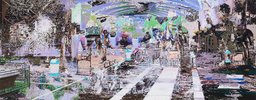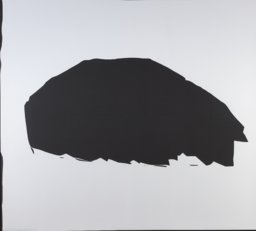Search
Showing Page 2 of 4, 120 results
Digitorial – Renoir. Rococo Revival
https://www.staedelmuseum.de/en/digital/digitorial-renoir-rococo-revival
Guido Reni
Bastian Eclercy (Head Italian, French, and Spanish Paintings before 1800, Städel Museum)Project management: Aleksandra Rentzsch (Assistant Curator of Italian, French and Spanish paintings before 1800).
https://www.staedelmuseum.de/en/guido-reni
Digitorial – Art and the Reformation
https://www.staedelmuseum.de/en/digital/digitorial-art-and-the-reformation
Digitorial – Rubens. The Power of Transformation
https://www.staedelmuseum.de/en/digital/digitorial-rubens
Digitorial – Titian and the Renaissance in Venice
https://www.staedelmuseum.de/en/digital/digitorial-titian-and-the-renaissance-in-venice
Exhibitions & Programme
We cordially invite you to acquaint yourself with our wide-ranging offers in various languages for children and adults, school classes, clubs, associations or company groups – and make every museum visit unique.
https://www.staedelmuseum.de/en/exhibitions-programme
Kollwitz
More than 110 striking works on paper, sculptures, and early paintings by the artist were on view, including outstanding loans from the Berlin Kupferstichkabinett, the Käthe Kollwitz Museum in Cologne, the Art Institute of Chicago, the Sprengel Museum Hannover, the Staatsgalerie Stuttgart and elsewhere.
https://www.staedelmuseum.de/en/kollwitz
Renoir. Rococo Revival
For the first time the Städel Museum adressed the surprising references in his art to Rococo painting in a large-scale special exhibition. Whereas Rococo painting was considered frivolous and immoral after the French Revolution, it underwent a revival in the nineteenth century and was widely visible in Renoir’s lifetime.
https://www.staedelmuseum.de/en/renoir-rococo-revival
Making van Gogh
How did it come about that Van Gogh became so popular especially in Germany? Who championed his oeuvre, and how did artists respond to it? The exhibition presented Van Gogh as a pivotal figure for art of the German avant-garde.
https://www.staedelmuseum.de/en/making-van-gogh
Georg Baselitz
His monumental “Heroes” in their tattered battle dress, figures marked as much by failure as they are by resignation, possess an accordingly contradictory character.
https://www.staedelmuseum.de/en/georg-baselitz
Rembrandt in Amsterdam
On the occasion of the exhibition “Rembrandt in Amsterdam: Creativity and Competition”, the Städel Museum organized an international conference on current art-technological research on Rembrandt’s paintings and works on paper.
https://www.staedelmuseum.de/en/rembrandt-in-amsterdam

Barrier
Corinne Wasmuht
2008https://sammlung.staedelmuseum.de/en/work/barrier
Imprint Digitorial AfkM
The provider of this Internet presence as defined by German law is the Städelsches Kunstinstitut und Städtische Galerie, referred to below as “Städel Museum”.Postal address:Städel Museum / Städelsches Kunstinstitut und Städtische GalerieDürerstraße 260596 Frankfurt am MainPhone: +49-69-605098-0Fax: +49(0)69-605098-111E-Mail: info@staedelmuseum.deDirector: Dr
https://www.staedelmuseum.de/en/imprint-digitorial-afkm
Imprint Digitorial SuV
The provider of this Internet presence as defined by German law is the Städelsches Kunstinstitut und Städtische Galerie, referred to below as “Städel Museum”.Postal address:Städel Museum / Städelsches Kunstinstitut und Städtische GalerieDürerstraße 260596 Frankfurt am MainPhone: +49-69-605098-0Fax: +49(0)69-605098-111E-Mail: info@staedelmuseum.deDirector: Dr
https://www.staedelmuseum.de/en/imprint-digitorial-suv
Vices of Life
In its bicentennial year, Frankfurt’s Städel Museum was presenting prints by the English painter, engraver and etcher William Hogarth (1697‒1764).
https://www.staedelmuseum.de/en/vices-of-life
Foundations
The involvement of foundations is of key importance for the Städel Museum as a place of education, research and scholarly study. Our foundation partners accompany us in future-oriented exhibition and education projects.
https://www.staedelmuseum.de/en/support/foundations
Close Up
With the means of art, they—directly or indirectly—actively call upon us to take a stand ourselves.Discover this thematic focus online. Honoured with the DigAMus Award 2023.
https://www.staedelmuseum.de/en/digital/close-up
Jean-Jacques de Boissieu
The Städel Museum’s jubilee year starts with an exhibition of outstanding drawings and etchings by the French artist Jean-Jacques de Boissieu (1736–1810), which will be on display in the Exhibition Hall of the Department of Prints and Drawings.
https://www.staedelmuseum.de/en/jean-jacques-de-boissieu
Tokens of Friendship
In the exhibition, selected ‘new arrivals’ and works from the Städel’s collection thus corresponded and correlated with one another to the mutual enrichment of both.
https://www.staedelmuseum.de/en/tokens-of-friendship
Sigmar Polke
For the works he printed from 1967 to 1979 he preferred offset or silkscreen printing, two rather unsophisticated techniques in terms of craftsmanship and trivial methods from the artistic point of view, to transport and spread seemingly random, irritating comments on art and society.
https://www.staedelmuseum.de/en/sigmar-polke

Four Proposals to Alter Modern (32)
Michael Riedel
2009https://sammlung.staedelmuseum.de/en/work/vier-vorschlaege-zur-veraenderung-von-modern-1
Accessibility
There is a lift at the main entrance of the Städel Museum (Schaumainkai 63) for visitors with limited mobility and visitors with prams or pushchairs.
https://www.staedelmuseum.de/en/visit/accessibility
Shifting Points of View
“Shifting Points of View” is an education initiative intended to support thinking and acting in a way that promotes democracy—through an ever-expanding art education programme consisting of discursive guided tours, digital offers, practical art seminars, workshops and much more.
https://www.staedelmuseum.de/en/exhibitions-programme/shifting-points-of-view
John Baldessari
“200 Years Städel”, the bicentennial celebrations of Frankfurt’s Städel Museum, culminated with a solo exhibition of works by the internationally renowned American artist John Baldessari.
https://www.staedelmuseum.de/en/john-baldessari
Before Dürer
The Städel Museum devoted an exhibition to the engraving in its early days as an artistic pictorial medium. The show presented some 130 important German and Netherlandish engravings of the fifteenth century, and thus retraced the development of the medium from its simple beginnings to ever more sophisticated creations.
https://www.staedelmuseum.de/en/before-duerer
Lotte Laserstein
The Städel Museum in Frankfurt am Main presented a comprehensive solo exhibition with works by Lotte Laserstein. Her oeuvre is one of the great recent art historical rediscoveries and features sensitive and compelling portraits from the final years of the Weimar Republic.
https://www.staedelmuseum.de/en/lotte-laserstein
Picasso
Whether etching, drypoint, lithography, or linocut, with never-dwindling curiosity and virtuosity, Picasso gained expertise in a wide variety of printmaking techniques, always questioning what he had found in new and experimental ways.
https://www.staedelmuseum.de/en/picasso
Städel | Women
The Roederstein-Jughenn Archive domiciled in the Städel Museum since 2019 provides insights into a network of women around Roederstein who supported and encouraged one another in matters of training and exhibiting, while also providing each other practical help.
https://www.staedelmuseum.de/en/staedel-women
Faces of the Time
Hugo Erfurth (1874–1948)Study for a Portrait in Landscape (Helene Erfurth), 1900Bromoil transfer print, 29.6 x 21.9 cmStädel Museum, Frankfurt am MainJoint property with the Städelscher Museums-Verein e.V.
https://www.staedelmuseum.de/en/faces-of-the-time
Images of Italy
The Städel Museum presented a selection of early photographs of Italy. The exhibition united altogether ninety major photos of the years 1850 to 1880 from the museum’s own collection.
https://www.staedelmuseum.de/en/images-of-italy